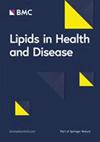高低密度脂蛋白胆固醇导致的缺血性心脏病死亡率的动态趋势:连接点分析和带有预测的年龄段队列分析
IF 3.9
2区 医学
Q2 BIOCHEMISTRY & MOLECULAR BIOLOGY
引用次数: 0
摘要
本研究旨在分析高低密度脂蛋白胆固醇(LDL-C)导致的缺血性心脏病(IHD)死亡率的动态趋势。研究人员从全球疾病负担数据库中提取了 1990 年至 2021 年高低密度脂蛋白胆固醇导致的缺血性心脏病死亡率数据。Joinpoint 软件用于估算年龄标准化死亡率(ASMR)的年均百分比变化(AAPC)。使用年龄-时期-队列模型来分析年龄、时期和队列对这些变化的影响。贝叶斯框架用于预测 2022 年至 2040 年高 LDL-C 导致的 IHD 死亡率。高 LDL-C 导致的 IHD 整体 ASMR 从 2022 年的每 10 万人 50.479 降至 2021 年的每 10 万人 32.286。高 LDL-C 导致的总体 IHD 死亡率的纵向年龄曲线呈单调上升趋势,尤其是在 65 岁之后。高 LDL-C 导致的总体 IHD 死亡率的时期和队列效应相对风险 (RR) 值呈下降趋势。预计高 LDL-C 导致的整体 IHD ASMR 将呈下降趋势,男性高 LDL-C 导致的 IHD 死亡率将高于女性。这项研究显示,在过去三十年中,高 LDL-C 导致的 IHD 死亡率持续下降,预计还会继续下降。尽管如此,性别差异依然存在,男性死亡率更高,老年人仍是易受影响的群体。本文章由计算机程序翻译,如有差异,请以英文原文为准。
Dynamic trends of ischemic heart disease mortality attributable to high low-density lipoprotein cholesterol: a joinpoint analysis and age-period-cohort analysis with predictions
The purpose of this study was to analyze the dynamic trends of ischemic heart disease (IHD) mortality attributable to high low-density lipoprotein cholesterol (LDL-C). Data on IHD mortality attributable to high LDL-C from 1990 to 2021 were extracted from the global disease burden database. Joinpoint software was used to estimate the average annual percentage change (AAPC) in the age-standardized mortality rate (ASMR). An age‒period‒cohort model was used to analyze the impacts of age, period, and cohort on these changes. The Bayesian framework was used to predict IHD mortality attributable to high LDL-C from 2022 to 2040. The overall ASMR of IHD attributable to high LDL-C decreased from 50. 479 per 100,000 people in 1990 to 32.286 per 100,000 people in 2021, and ASMR of IHD attributable to high LDL-C was higher in males than in females. The longitudinal age curves of the overall IHD mortality attributable to high LDL-C showed a monotonic upward trend, especially after 65 years of age. The period and cohort effect relative risk (RR) values of overall IHD mortality attributable to high LDL-C showed a downward trend. The overall ASMR of IHD attributable to high LDL-C is predicted to show a downward trend, and male IHD mortality attributable to high LDL-C is expected to be higher than that of females. This study revealed a sustained decrease in IHD mortality attributable to high LDL-C over three decades, with a continued decline expected. Despite this, gender disparities persist, with males experiencing higher mortality rates and elderly individuals remaining a vulnerable group.
求助全文
通过发布文献求助,成功后即可免费获取论文全文。
去求助
来源期刊

Lipids in Health and Disease
生物-生化与分子生物学
CiteScore
7.70
自引率
2.20%
发文量
122
审稿时长
3-8 weeks
期刊介绍:
Lipids in Health and Disease is an open access, peer-reviewed, journal that publishes articles on all aspects of lipids: their biochemistry, pharmacology, toxicology, role in health and disease, and the synthesis of new lipid compounds.
Lipids in Health and Disease is aimed at all scientists, health professionals and physicians interested in the area of lipids. Lipids are defined here in their broadest sense, to include: cholesterol, essential fatty acids, saturated fatty acids, phospholipids, inositol lipids, second messenger lipids, enzymes and synthetic machinery that is involved in the metabolism of various lipids in the cells and tissues, and also various aspects of lipid transport, etc. In addition, the journal also publishes research that investigates and defines the role of lipids in various physiological processes, pathology and disease. In particular, the journal aims to bridge the gap between the bench and the clinic by publishing articles that are particularly relevant to human diseases and the role of lipids in the management of various diseases.
 求助内容:
求助内容: 应助结果提醒方式:
应助结果提醒方式:


